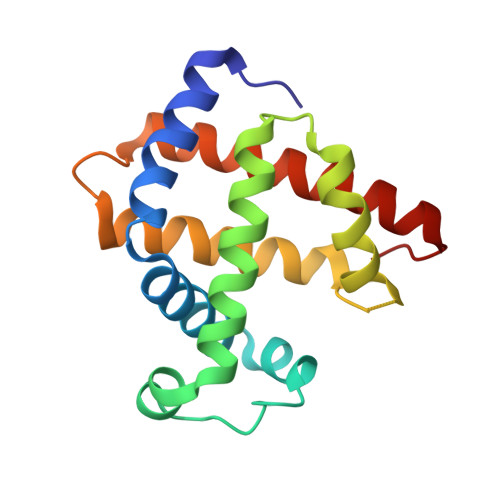Coordinated Design of Cofactor and Active Site Structures in Development of New Protein Catalysts
Ueno, T., Koshiyama, T., Ohashi, M., Kondo, K., Kono, M., Suzuki, A., Yamane, T., Watanabe, Y.(2005) J Am Chem Soc 127: 6556-6562
- PubMed: 15869276
- DOI: https://doi.org/10.1021/ja045995q
- Primary Citation of Related Structures:
1J3F, 1V9Q - PubMed Abstract:
New methods for the synthesis of artificial metalloenzymes are important for the construction of novel biocatalysts and biomaterials. Recently, we reported new methodology for the synthesis of artificial metalloenzymes by reconstituting apo-myoglobin with metal complexes (Ohashi, M. et al., Angew Chem., Int. Ed. 2003, 42, 1005-1008). However, it has been difficult to improve their reactivity, since their crystal structures were not available. In this article, we report the crystal structures of M(III)(Schiff base).apo-A71GMbs (M = Cr and Mn). The structures suggest that the position of the metal complex in apo-Mb is regulated by (i) noncovalent interaction between the ligand and surrounding peptides and (ii) the ligation of the metal ion to proximal histidine (His93). In addition, it is proposed that specific interactions of Ile107 with 3- and 3'-substituent groups on the salen ligand control the location of the Schiff base ligand in the active site. On the basis of these results, we have successfully controlled the enantioselectivity in the sulfoxidation of thioanisole by changing the size of substituents at the 3 and 3' positions. This is the first example of an enantioselective enzymatic reaction regulated by the design of metal complex in the protein active site.
Organizational Affiliation:
Research Center for Materials Science and Department of Chemistry, Graduate School of Science, Nagoya University, Nagoya 464-8602, Japan.

















